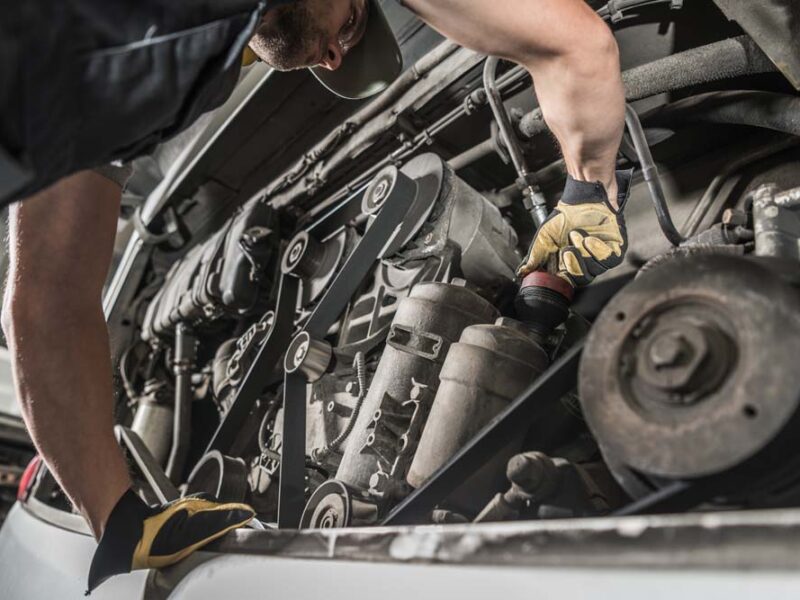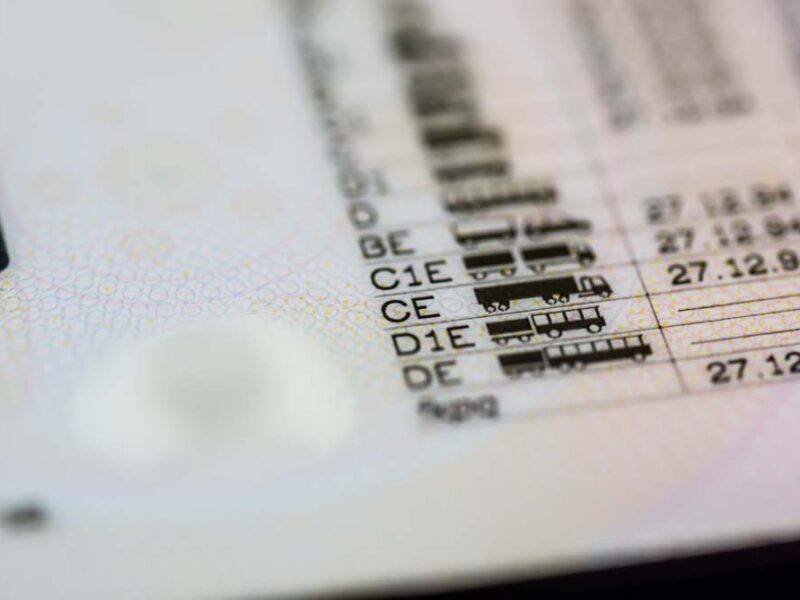Vehicle Maintenance Data Collected by the DVSA
In a recent ‘blog’ by the DVSA’s Danny Charles the amount and type of data that the DVSA collects via its various interactions with companies and the general public was discussed. Some may find it surprising how much data the DVSA holds and how much of it is then available for companies and individuals to access. Access to the data that the DVSA holds could be very useful for transport operators when managing and maintaining their fleets of vehicles, especially if the data supports shortcomings requiring action.
The Vehicle Operator Licensing System Data
Transport operators can register with the Vehicle Operator Licensing System (VOL) via the government website (www.gov.uk). The current system has been running since around 2016 when VOL replaced the Operator Licence Self Service system. Operators via VOL can apply for licences, upload documents like bank statements and update licence records. In return the VOL system allows operators to access various reports such as vehicle operator safety and risk reports, and what the Operator Compliance Risk Score (OCRS) currently is for their operation. The OCRS is a score given to operators by the DVSA and is calculated over a 3-year rolling period. The score can go up or down depending on DVSA findings (‘positive’ or ‘negative’) such as the results at MOT. It is a key test for how an operator is “viewed” by the DVSA, i.e. high risk or low risk. Having access to this scoring information and the other data within the VOL system should allow an operator to see patterns in their drivers and fleet management and anticipate problems before a crisis develops.
The DVSA publishes its enforcement data by operator, so the results of any checks, or enforcement that the DVSA has undertaken, is then made available in the ‘public domain’. This is done once every year, with 2023 data about to be released in the coming weeks. Currently one can view the 2022 “vehicle operators who committed road safety offences in 2022" by clicking here.
Knowing what your DVSA data is and what it says about your operation to potential new customers will become increasingly important in a world where regulation and due diligence are the lodestars of the corporate world, and potential customers can be expected to access the data as part of their own due diligence.
Set a Reminder…
The DVSA does offer a very helpful reminder service for MOTs for both individuals as well as commercial operators. The system is available for no charge via the MOT Reminder Service. Once you have signed up to this system it will send a text message or email ahead of when an MOT is due for a vehicle. For lorries, buses and coaches this will be 2 months prior to the MOT date so that there is time to get vehicles booked in to a test centre (or to make interim arrangements if a test slot is not available).
For larger operators who have a dedicated fleet department this may not be needed, but for small to medium sized operators who are running smaller fleets of vehicles it can be very helpful in ensuring that vehicles maintenance regimes are adhered to.
As well as setting reminders it is also possible to view the MOT history of individual vehicles via the DVSA data. This service is helpful for operators of vehicle fleets to track test failures within their fleet. Of course it is also available to 3rd party providers to the transport industry, such as insurers.
To access the data one can either use the web-service (see link above) and check a vehicle by entering its individual vehicle registration number. Larger users where this option would be rather onerous can use an Application Programming Interface (API) to speed up the "data mining”.
How would you know if your Vehicle has had a Recall?
It is a key part of the Guide to Maintaining Roadworthiness that vehicle operators need, within their wider vehicle maintenance system, to have a process by which they will be notified about any vehicle safety recalls or notices so that they can immediately act upon such a recall.
The DVSA has a system of publishing vehicle manufacturer’s product recalls. When a safety recall is issued it is added to a list of all recalls on line, which can be searched by vehicle type.
The system is not foolproof – searching for vehicle type with commercial vehicles is rather broad brush and currently the system will not give information as to whether individual vehicle makes have had any recalls either outstanding or dealt with. The DVSA say that they are currently working with vehicle manufacturers to improve this aspect. Where it is available the data is also contained on the MOT History API. Currently Man Trucks, Ford, Mercedes and VW Vans share their commercial vehicle safety recall data with the DVSA.
What Score would you give your Maintenance Procedures?
The DVSA’s Guide to Maintaining Roadworthiness states that best practice means that it is not enough to rely on a maintenance system alone, because this cannot ensure that vehicles are roadworthy…you will need to combine good quality maintenance practices and skills with supervision and effective management of the system.
Putting in place a maintenance system that is both compliant and above all effective can be a complicated and time-consuming task, even with DVSA data to help guide you, especially if you have not done it before or feel that you are being given conflicting guidance.
Pellys Transport & Regulatory Law have many years of experience helping operators implement successful, stress-tested systems that will ‘get them right’, but are importantly proportionate and appropriate to each operator’s business.
If you would like some help and guidance on your maintenance systems then call Pellys Transport & Regulatory Law on 01279 818280 or click here to send an email. We are here to help.
(c) Richard Pelly, 28 October 2024

Latest Coach & Bus Industry News and Insight

New Rules for Vehicle Operators and Drivers Carrying Out International Journeys
The Department for Transport and the Driver and Vehicle Standards Agency recently issued a bulletin regarding the new rules that vehicle operators and their drivers will have to comply with if travelling on international journeys…

Road Haulage Association Members and DVSA Leadership Work Shadow Each Other!
To help highlight the Road Haulage Association’s “National Lorry Week” which this year was between 4th and 8th November 2024, the Road Haulage Association and the DVSA’s Leadership team decided to spend some time work shadowing each other….

2024 Update to Guide to Maintaining Roadworthiness (GTMR)
The Guide to Maintaining Roadworthiness is the Driver & Vehicle Standard Agency’s (DVSA) standard produced in collaboration with key industry stake holders which explains the responsibilities and systems involved in maintaining vehicles in a roadworthy….

New Driver CPC Reforms to be in Force from 3rd December 2024
Following a very lengthy consultation period on this matter launched in early 2023, Parliament finally debated the “Vehicle Drivers (Certificates of Professional Competence) (Amendment) Regulations 2024” on Tuesday 29th October 2024…

When Sat Nav’s Lead Lorries Astray!
Lorries getting into trouble and causing chaos in the small country roads of Great Britain have been making headlines again. Whilst a lot of this content is amusing and no doubt is a winner with internet audiences there is a very serious side to these incidents…

Traffic Commissioners 2023-2024 Report – the Highlights & the Lowlights of the Year
In early October the Traffic Commissioners of Great Britain published their annual report. The report encompasses the purpose of the individual Traffic Commissioners who are independent regulators for the goods vehicle and public service vehicle industries and their professional drivers…

Vehicle Maintenance Data Collected by the DVSA
In a recent ‘blog’ by the DVSA’s Danny Charles the amount and type of data that the DVSA collects was discussed. Some may find it surprising how much data the DVSA holds and makes available to the general public on individual transport businesses…

Murky Mini-Bus Waters in UK?
There has been reports in the industry news concerning the number of illegal operators of mini bus services who are operating un-hindered by the regulatory enforcement agencies…

Driver CPC – Changes Coming in 2024 and 2025
The Driver Certificate of Professional Competence (DCPC) was introduced in the UK in 2007, as specified in EU Directive 2003/59/EC for all commercial drivers…

Driving in the UK? Read about the latest Rule Changes in 2024
Earlier this year various new driving laws were introduced, impacting both standard road users as well as HGV and PSV road users across England, Wales & Scotland. If you are driving in the UK, especially if you are a commercial driver, then you should ensure that you are aware of these amendments and new rules…

Are You Taking your Responsibilities to Maintain your Vehicles Seriously?
Running a haulage business is not an easy undertaking. There are a multitude of decisions to be made on a daily basis before any driver actually gets behind the wheel and delivers the goods (or passengers!).

Update to the Guide to Registering & Operating Local Bus Services in England & Wales
The Senior Traffic Commissioner’s guide to registering and operating local bus services in England and Wales is intended to help operators of local bus services understand the requirements for registering a service.
